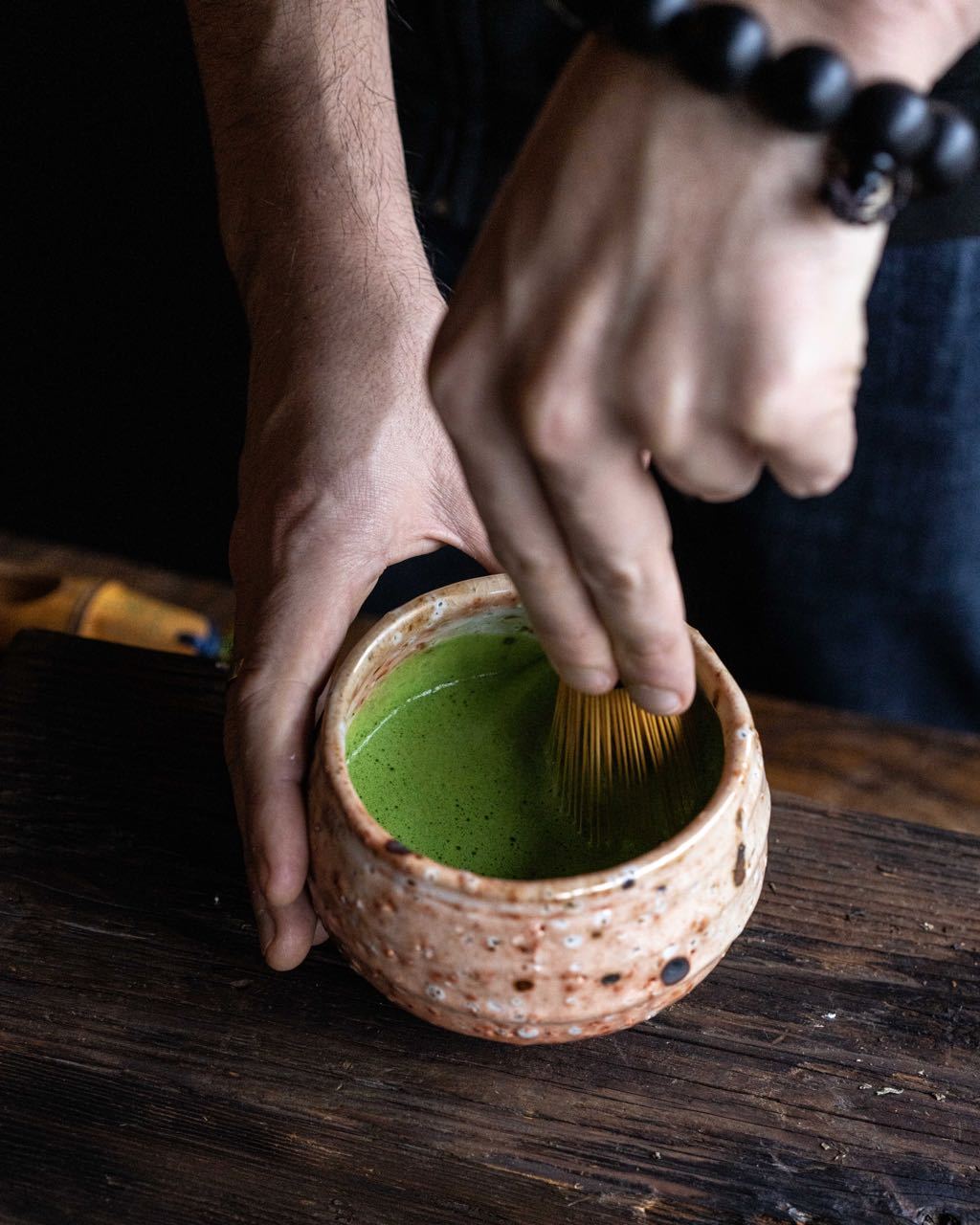
MATCHA
What is matcha?
Matcha (sometimes transliterated as ‘maccha’) is green tea (i.e. an unoxidized Camellia Sinensis leaf), micro-milled into a very fine powder. It is also the ‘core’ of the Japanese tea ceremony (more on that later).
What does ‘MATCHA’ (抹茶) mean?
The first character, 抹 (mǒ in Chinese and ‘mat’ or ‘mac’ in Japanese) can be translated as wiping, rubbing or scrubbing. When talking about this type of tea, we should probably translate it as ‘whisking’. The second character, 茶, means ‘tea’.
How did it start?
Someone in China’s Song Dynasty (10th – 13th centuries) had the idea to pulverize green tea leaves (previously steamed and dried) and whisk them with hot water; it was a brilliant idea! Whisking tea became very popular not only in Song China but also in Korea and Japan. We thank Buddhist monks for spreading tea culture all over East Asia in this period. In Japan, a gentleman called Eisai (12th century) is often considered the father of Japanese tea culture.
Cool facts:
- Early Song Dynasty whisks were quite different. They started looking more like ‘little flat brooms’ and evolved into something reminiscent of a ‘bote bote’ chasen before looking like the whisks that we often see today.
- If you want to geek out, check out this article (in Chinese) about the evolution of Song Dynasty tea paraphernalia: https://www.rujiazg.com/article/12143
- If you want to experiment with an older style of tea whisk, please consider the bote bote chasen below.